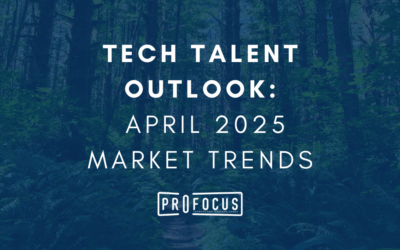At our most recent Tech Leaders Roundtable, a group of tech leaders came together to share candid perspectives on where AI is delivering impact today—and where the road is bumpier than expected.
The conversation revealed a clear theme: moving from personal experimentation to enterprise deployment is a reality check. As one engineering leader put it:
“AI is a force multiplier, but you still need troops on the ground.”
Where AI Works Today – and Where It Struggles
Leaders highlighted low-friction wins in contact centers, where AI can:
-
Ingest knowledge articles
-
Live-transcribe calls
-
Suggest in-call replies
These capabilities shorten time-to-competency for new agents and improve consistency.
On the other hand, areas requiring high accuracy, such as finance or regulated workflows, remain challenging. Without digitized, high-quality data and tight controls, adoption stalls. Leaders noted that tolerance for error varies: 80% may be acceptable in some brand experiences, but 99%+ is non-negotiable in financial transactions.
Technical Debt: Accelerator or Shell Game?
AI is proving to be a double-edged sword:
-
It can accelerate delivery—even generating entire modules.
-
It can also pay down debt by reverse-engineering legacy code, generating documentation, and enabling natural-language search across rules and systems.
However, leaders cautioned that AI may optimize for its own maintainability over human readability. The consensus: make AI part of your debt strategy, but add guardrails for code quality, review, and knowledge capture.
Human Experience Is Still the Moat
In premium, high-touch settings, AI is being used to augment—not replace—the human touch. In lean-margin businesses, automation pressure is stronger.
Leaders also flagged an AI-vs-AI “arms race” in recruiting—screeners vs. resume optimizers—reinforcing the value of authentic human evaluation.
One product and delivery leader asked a provocative question:
“If a junior can’t learn because the bot writes the ‘easy’ code, where do tomorrow’s seniors come from?”
Teams and Talent: Augmentation First
Rather than cutting roles, most teams are holding headcount steady and using AI to do more with the same team size. Still, two cautions emerged:
-
Keep senior oversight in the loop—junior engineers may not recognize when AI outputs are “enterprise-wrong.”
-
Protect the junior pipeline or risk hollowing out the future talent ladder.
Data Governance and Security: The Hard Edge
Concerns centered less on super-intelligence and more on practical data leakage. Leaders cited issues with copilots surfacing sensitive content, unclear attribution, and difficulty tracing exposure once data “goes to the ether.”
As a result, many are leaning toward in-house RAG patterns and tighter access controls, with governance as a first investment—not an afterthought.
Practical Constraints
Beyond organizational challenges, leaders noted macro bottlenecks—compute, power, and supply chain—that will act as natural speed governors on AI expansion. The implication: focus on right-sized, ROI-proven use cases, not unlimited scale.
What Leaders Will Watch in the Next 6–12 Months
-
Targeted POCs that prove efficiency or quality gains
-
Training programs to raise AI literacy and prompting skills
-
Model refinement—culling low performers, customizing strong ones
-
Data readiness—ensuring quality, lineage, and policy enable trustworthy outcomes
One moderator summed it up well: many organizations show heavy investment intent, but also a high rate of first-time deployment failures when ROI, data, or expectations aren’t ready.
Key Takeaway
Generative AI holds enormous potential, but enterprise success requires more than enthusiasm. Strong governance, realistic expectations, and a commitment to human experience will separate the hype from durable advantage. The next year will be a proving ground—one where organizations that pair POCs, employee training, and data discipline with pragmatic adoption are best positioned to lead.




